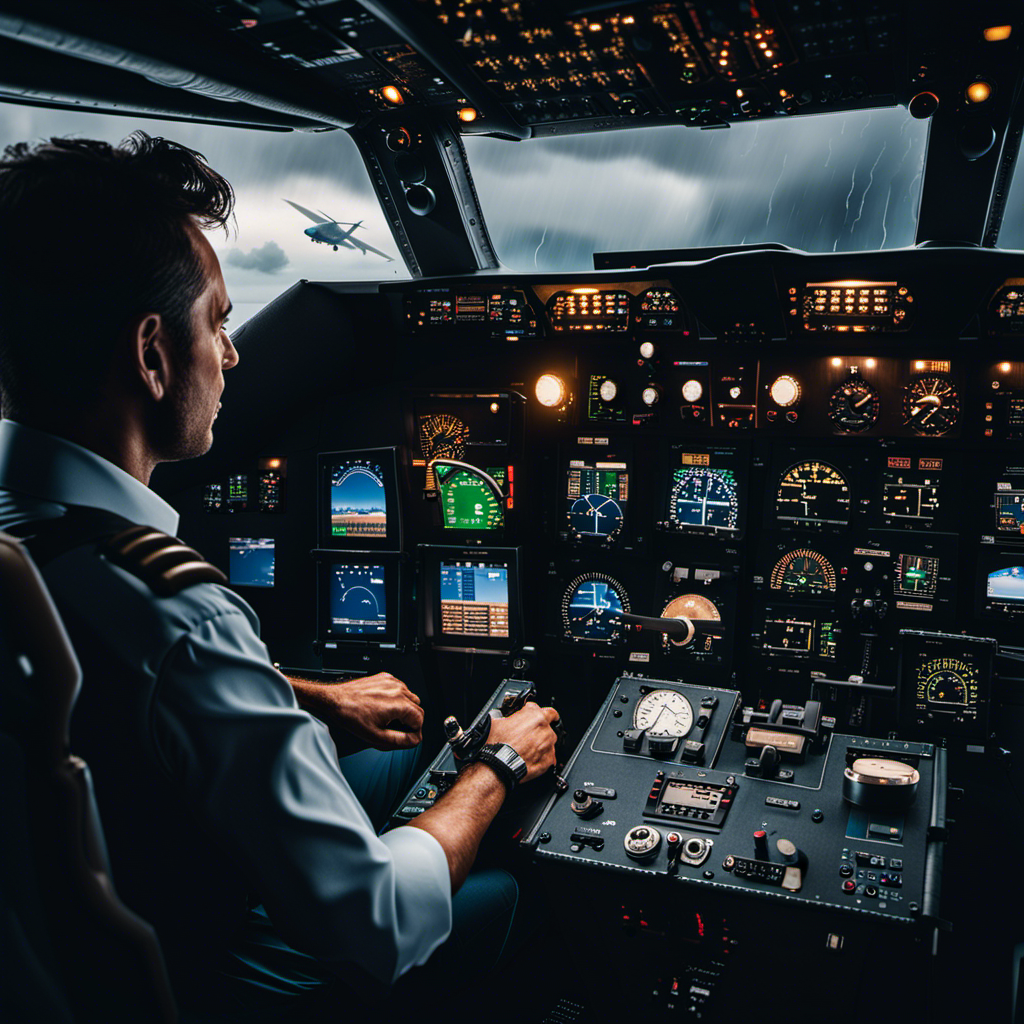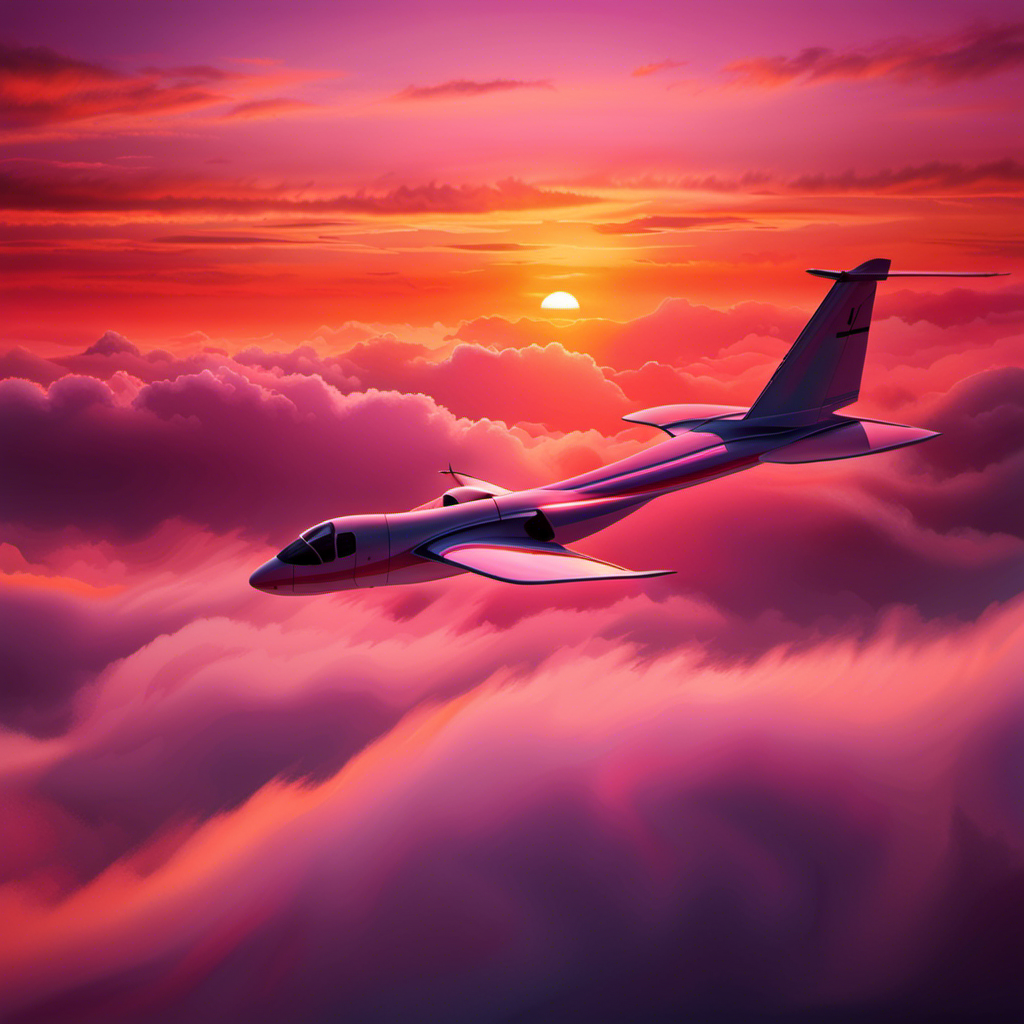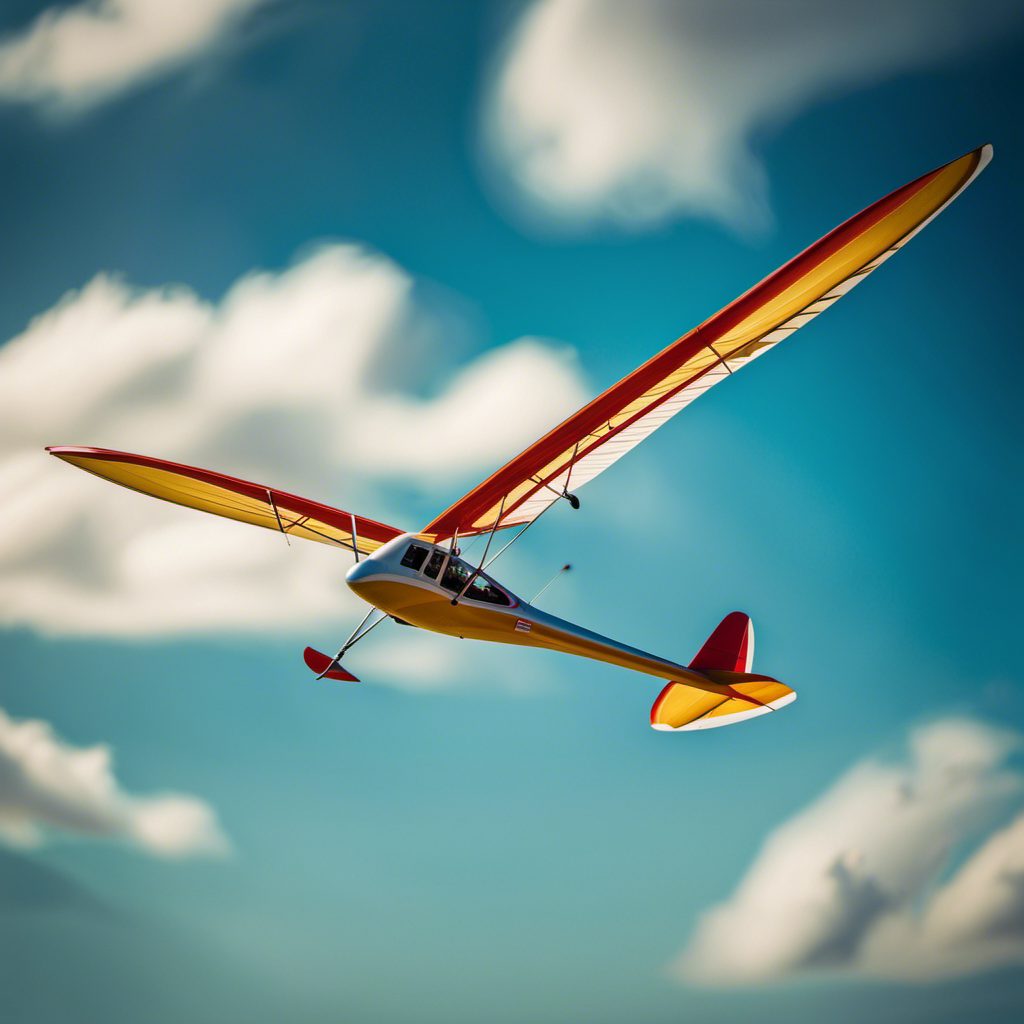Have you ever considered what it’s like to be a pilot?
Picture this: you’re soaring through the sky, defying gravity, and commanding a metal bird with precision and skill.
But being a pilot is no easy feat. From the physical demands of the job to the constant training and recertification, the life of a pilot is filled with challenges.
In this article, we’ll explore the hardest aspects of being a pilot and shed light on the incredible feats they accomplish every day.
So fasten your seatbelts and get ready for an inside look into the world of aviation.
Key Takeaways
- Adapting to different cultures and languages can be challenging for pilots, as they have to navigate cultural differences, language barriers, and adjust to new customs.
- Dealing with emergencies and crisis situations requires pilots to stay calm and focused, follow standard operating procedures, and effectively communicate with crew and air traffic control.
- Maintaining a healthy work-life balance is difficult for pilots due to the demanding nature of their job, long hours, irregular schedules, and constant travel.
- Pilots need to prioritize self-care by engaging in activities like exercise, healthy eating, sufficient rest, and relaxation techniques, while also setting boundaries between their work and personal life to avoid burnout and promote overall well-being.
Physical Demands of the Job
The hardest thing about being a pilot is the physical demands of the job. As a pilot, you are required to exert yourself physically in various ways.
Firstly, you need to have excellent hand-eye coordination and motor skills to maneuver the aircraft smoothly and precisely. You must possess the strength to manipulate the control yoke or stick, especially during turbulent conditions.
Additionally, the long hours of sitting in the cockpit can take a toll on your body, causing discomfort and fatigue. Maintaining physical fitness is crucial to ensure you can handle the physical demands of flying.
However, it’s not just about the initial physical challenges; constant training and recertification are necessary to stay updated with the latest procedures, technology, and safety protocols in the aviation industry.
Constant Training and Recertification
Constant training and recertification are challenging aspects of being a pilot. As a pilot, you must stay up-to-date with the latest regulations, technologies, and procedures. This requires continuous learning and practice to maintain your skills and knowledge. The aviation industry is constantly evolving, and new advancements are being made all the time. You must undergo regular training sessions to ensure that you are familiar with any changes or updates. These training sessions can be intense and demanding, as they often involve simulated scenarios and emergency procedures.
Additionally, pilots are required to recertify their licenses periodically, which involves written exams, flight evaluations, and medical assessments. This ongoing training and recertification process is essential to ensure the safety and professionalism of pilots, but it can be mentally and physically exhausting.
With the constant training and recertification demands, pilots also face long and irregular working hours.
Long and Irregular Working Hours
Pilots often experience long and irregular working hours, which can be challenging to manage. The aviation industry operates on a 24/7 basis, and as a pilot, you must be prepared to work at any time of the day or night. Your schedule may vary from week to week, with early morning flights, overnight layovers, and extended periods away from home.
This irregularity can disrupt your sleep patterns, making it difficult to maintain a regular routine and achieve enough rest. Moreover, the long hours spent in the cockpit require a high level of concentration and focus, which can be physically and mentally demanding. However, these challenges are part of the job, as pilots are entrusted with the responsibility of safely transporting passengers and cargo.
The demanding working hours are just one aspect of the profession that showcases the high levels of responsibility and accountability that pilots must uphold.
High Levels of Responsibility and Accountability
As a pilot, you are entrusted with the safety and well-being of every individual on board the aircraft. This responsibility comes with a high level of accountability that can be one of the hardest aspects of being a pilot.
You must constantly make split-second decisions, navigate through challenging weather conditions, and ensure that the aircraft is operating at its optimal performance. The weight of this responsibility can be immense, as any mistake or oversight could have severe consequences.
This is why it is crucial for pilots to effectively manage stress and pressure in order to maintain their focus and decision-making abilities. By developing strategies to cope with the demands of the job, pilots can ensure that they are able to perform their duties to the best of their abilities and maintain a high standard of safety.
Dealing with Stress and Pressure
Managing stress and pressure can be challenging for pilots, but it is crucial for maintaining focus and making sound decisions. As a pilot, you are responsible for the safety of your passengers and crew, and any lapse in concentration can have serious consequences. To help you cope with the demands of your job, it is important to develop effective stress management techniques.
One approach is to incorporate stress-reducing activities into your daily routine, such as exercise and meditation. Additionally, having a strong support network of colleagues and loved ones can provide emotional support during challenging times. Finally, practicing good self-care, including getting enough sleep and maintaining a healthy diet, can help you stay mentally and physically resilient.
By managing stress and pressure effectively, you can ensure that you are in the best possible state to perform your duties as a pilot.
Transitioning into the subsequent section about ‘managing fatigue and jet lag,’ it is important for pilots to also address these challenges in order to maintain peak performance.
Managing Fatigue and Jet Lag
After successfully navigating through the stresses and pressures of being a pilot, you must now confront another formidable challenge: managing fatigue and jet lag.
As a pilot, you will often find yourself crossing multiple time zones and experiencing irregular sleep patterns. This disruption to your body’s natural circadian rhythm can lead to fatigue, decreased alertness, and impaired cognitive function, all of which pose significant risks in the cockpit.
To combat this, airlines implement stringent regulations and guidelines to ensure pilots receive adequate rest and recovery time between flights. These measures include mandatory rest periods, limitations on consecutive flying hours, and mandatory sleep facilities during layovers. Additionally, pilots are trained in effective sleep management techniques, such as strategic napping and maintaining a healthy lifestyle.
By prioritizing your well-being and following these protocols, you can mitigate the effects of fatigue and jet lag, ensuring your utmost performance and safety.
As you learn to manage the challenges of fatigue and jet lag, you will also face the reality of separation from family and social life…
Separation from Family and Social Life
Balancing a demanding pilot schedule often means sacrificing time with loved ones and limited social interactions.
As a pilot, you understand the challenges of maintaining relationships and a fulfilling social life. The nature of the job requires long hours, irregular shifts, and frequent travels, making it difficult to spend quality time with your family and friends.
While technology has made it easier to stay connected, it cannot replace the physical presence and shared experiences. However, these sacrifices are part of the profession, and as a pilot, you have learned to adapt and find ways to make the most of the time you do have with your loved ones.
Additionally, this separation from family and social life prepares you for the next challenge of adapting to different cultures and languages.
Adapting to Different Cultures and Languages
Experiencing different cultures and languages is a unique aspect of your pilot career, allowing you to broaden your perspective and embrace diversity. As a pilot, you have the opportunity to travel to various destinations around the world, immersing yourself in different cultures and interacting with people from diverse backgrounds. This exposure not only enhances your personal growth but also helps you become a more adaptable and empathetic individual. Language barriers may initially pose challenges, but with time and experience, you develop effective communication skills and learn to navigate through unfamiliar linguistic landscapes. To evoke an emotional response in the audience, consider the following table:
| Challenges | Rewards |
|---|---|
| Cultural differences | Cultural enrichment |
| Language barriers | Language proficiency |
| Adjusting to new customs | Global perspective |
| Overcoming stereotypes | Appreciation for diversity |
| Building connections abroad | International friendships |
This ability to adapt to different cultures and languages seamlessly transitions into your role in dealing with emergencies and crisis situations.
Dealing with Emergencies and Crisis Situations
Adapting to different cultures and languages is an essential skill for pilots. However, dealing with emergencies and crisis situations can be even more demanding. As a pilot, you must be prepared for the unexpected and have the knowledge and skills to handle high-pressure situations.
Here are three key aspects of managing emergencies and crisis situations that every pilot must master:
-
Maintaining calm and focus: In the face of an emergency, it is crucial to stay calm and focused. Panic can impair decision-making abilities.
-
Following standard operating procedures: Pilots are trained to follow specific procedures for different emergency scenarios. This ensures a systematic approach to problem-solving.
-
Effective communication: Clear and concise communication with the crew and air traffic control is essential. It helps in coordinating efforts and ensuring everyone is on the same page.
Transitioning into the subsequent section about maintaining a healthy work-life balance, it is important for pilots to find ways to manage stress and prioritize their well-being.
Maintaining a Healthy Work-Life Balance
To achieve a healthy work-life balance, you must prioritize self-care and establish boundaries between your professional and personal life. As a pilot, maintaining this balance can be particularly challenging due to the demanding nature of your job.
The long hours, irregular schedules, and constant travel can take a toll on your physical and mental well-being. To counteract these challenges, it is crucial to prioritize self-care activities such as exercise, healthy eating, and sufficient rest.
Additionally, setting clear boundaries between work and personal life is essential. This means being able to disconnect from work when you’re off-duty and making time for hobbies, family, and friends.
Frequently Asked Questions
What are the main challenges pilots face when adapting to different cultures and languages?
When adapting to different cultures and languages, pilots face challenges such as communication barriers, understanding local aviation regulations, and cultural differences affecting decision-making. These challenges require adaptability, cultural sensitivity, and effective communication skills to ensure safe and efficient operations.
How do pilots deal with emergencies and crisis situations during flights?
During emergencies and crisis situations, pilots rely on their extensive training and experience to quickly assess the situation, communicate with the crew and air traffic control, follow established procedures, and make critical decisions to ensure the safety of the aircraft and passengers.
What strategies do pilots use to manage fatigue and jet lag?
To manage fatigue and jet lag, pilots employ strategic measures. They follow strict rest schedules, engage in physical activity, stay hydrated, and utilize sleep aids. These techniques ensure their mental and physical well-being, enabling safe and efficient flight operations.
How do pilots maintain a healthy work-life balance while working long and irregular hours?
To maintain a healthy work-life balance while working long and irregular hours, pilots prioritize self-care, establish routines, and communicate with their loved ones. They also make time for hobbies and relaxation to recharge and reduce the impact of their demanding schedules.
How do pilots cope with the separation from their family and social life due to their job demands?
Coping with the separation from family and social life is challenging for pilots. They rely on strong support networks, effective communication, and quality time spent with loved ones during their limited off-duty periods to maintain emotional well-being.
Conclusion
In conclusion, being a pilot is undoubtedly one of the most challenging professions in the world. The physical demands, constant training, and irregular working hours can push you to your limits. The high levels of responsibility and accountability can be overwhelming, and the stress and pressure can sometimes feel insurmountable.
Additionally, the separation from family and social life, adapting to different cultures and languages, and dealing with emergencies can make it seem like an impossible task. However, for those who embrace the challenge, the rewards of this profession are incomparable.
So, if you have what it takes, strap yourself in and get ready for the ride of a lifetime.
With a heart that soars as high as the skies, Aria, affectionately known as “Skylark,” is the driving force behind Soaring Skyways. Her journey into the gliding world began as a young dreamer gazing up at the soaring birds, yearning to experience the weightlessness and freedom they embodied. With years of experience both in the cockpit and behind the scenes, Aria’s commitment to the gliding community is unwavering.










